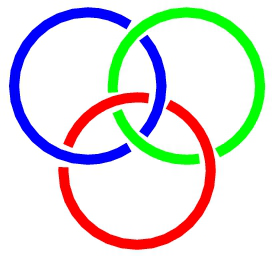Speaker
Dr
Tomas Gonzalez-Lezana
(Instituto de Fisica Fundamental, CSIC)
Description
We have recently developed an approximate method to study the rovibrational
spectra of molecular trimers, based in the use of distributed Gaussian
functions (DGFs) to describe the interparticle distances [1,2]. The main
assumption is to consider that rotation and vibration can be treated separately.
The purely vibrational problem for a zero total angular momentum, J=0, is
solved by means of an exact variational quantum approach which employs a
set of triangular arrangements formed by the combination of DGFs for the R1,
R2 and R3 coordinates [3]. The eigenstates of the J=0 case constitute the
radial basis set to solve the rotational Hamiltonian.
The method has been applied for the Ar3 system and the comparison with
results from exact hyperspherical coordinate calculations [1, 4] reveals the
validity of the approximation to describe the bound states for large values of
the total angular momentum.
[1] M. Márquez-Mijares, T. González-Lezana, O. Roncero, S. Miret-Artés,
G. Delgado-Barrio and P. Villarreal, Chem. Phys. Lett. 460, 417 (2008).
[2] I. Baccarelli, F. A. Gianturco, T. González-Lezana, G. Delgado-Barrio,
S. Miret-Artés and P. Villarreal, Phys. Rep. 452, 1 (2007).
[3] T. González-Lezana, S. Miret-Artés, G. Delgado-Barrio, P. Villarreal,
J. Rubayo-Soneira, I. Baccarelli, F. Paesani and F. A. Gianturco, Comp. Phys.
Comm. 145, 156 (2002).
[4] F. Karlický, B. Lepetit, R. Kalus and F. X. Gadea,
J. Chem. Phys. 126, 74305 (2007).
Author
Dr
Tomas Gonzalez-Lezana
(Instituto de Fisica Fundamental, CSIC)
Co-authors
Prof.
Gerardo Delgado-Barrio
(Instituto de Fisica Fundamental, CSIC)
Mr
Maykel Márquez-Mijares
(Instituto de Fisica Fundamental, CSIC)
Dr
Octavio Roncero
(Instituto de Fisica Fundamental, CSIC)
Prof.
Pablo Villarreal
(Instituto de Fisica Fundamental, CSIC)
Prof.
Salvador Miret-Artés
(Instituto de Fisica Fundamental, CSIC)

